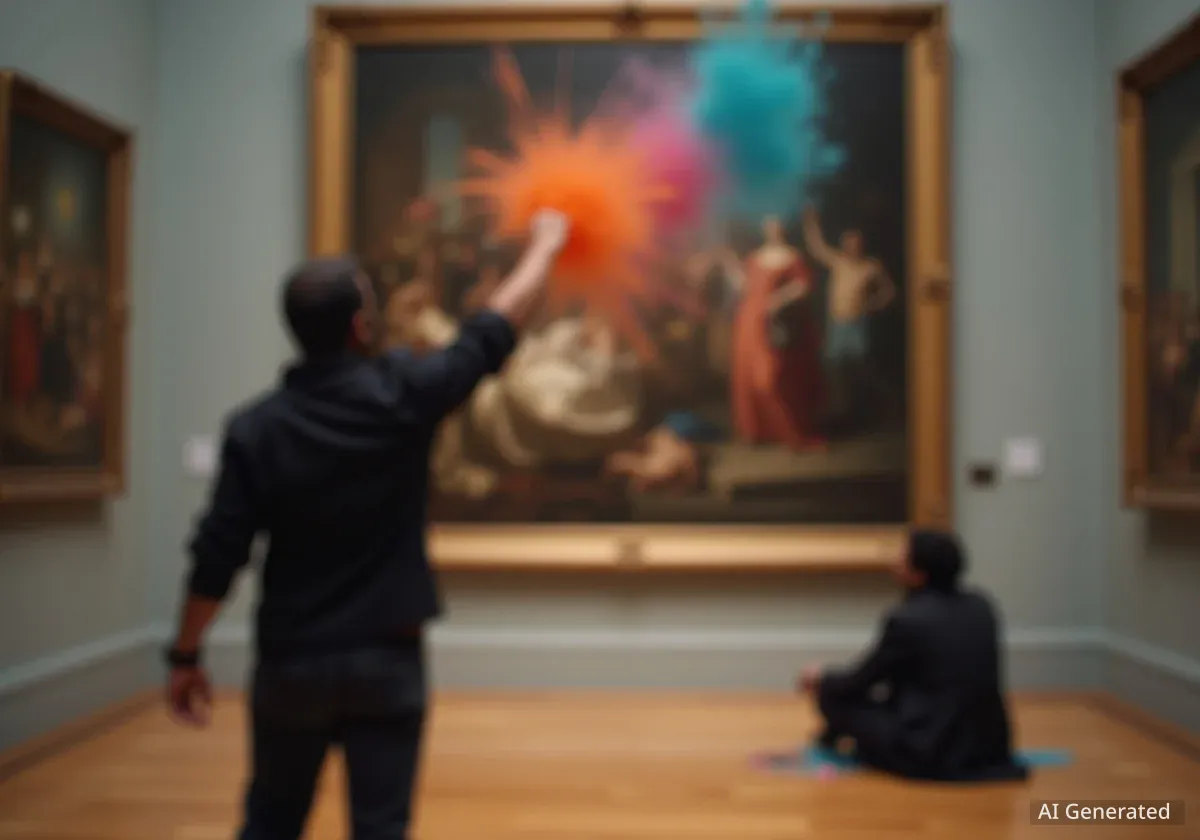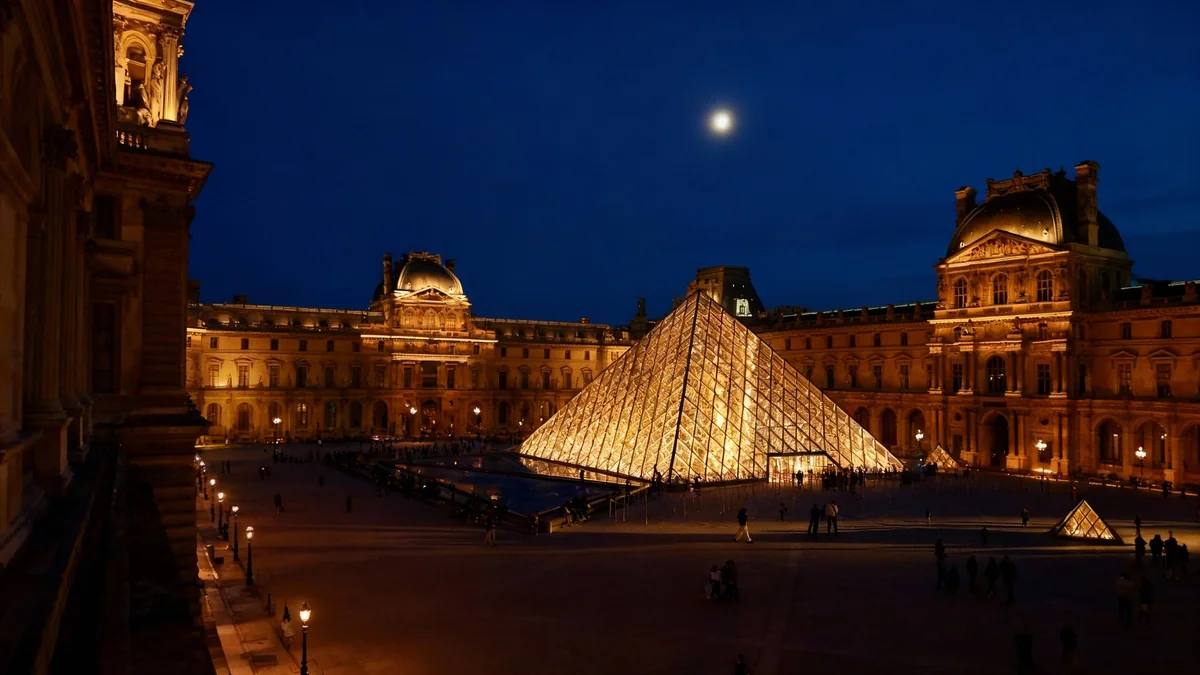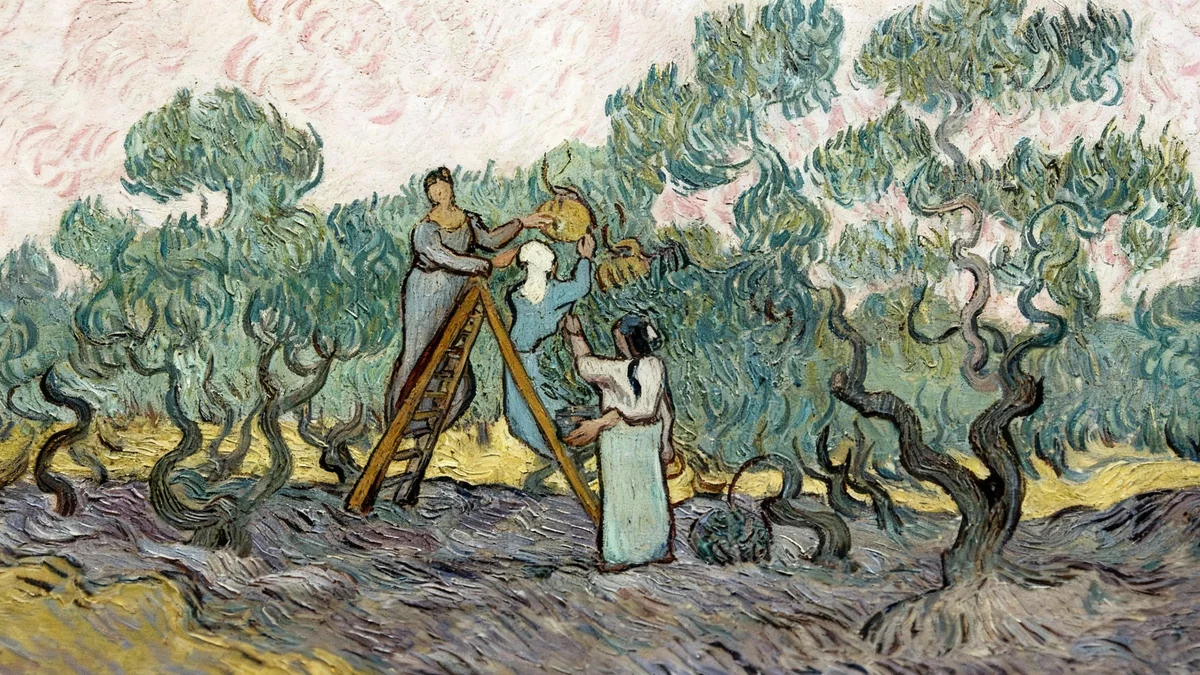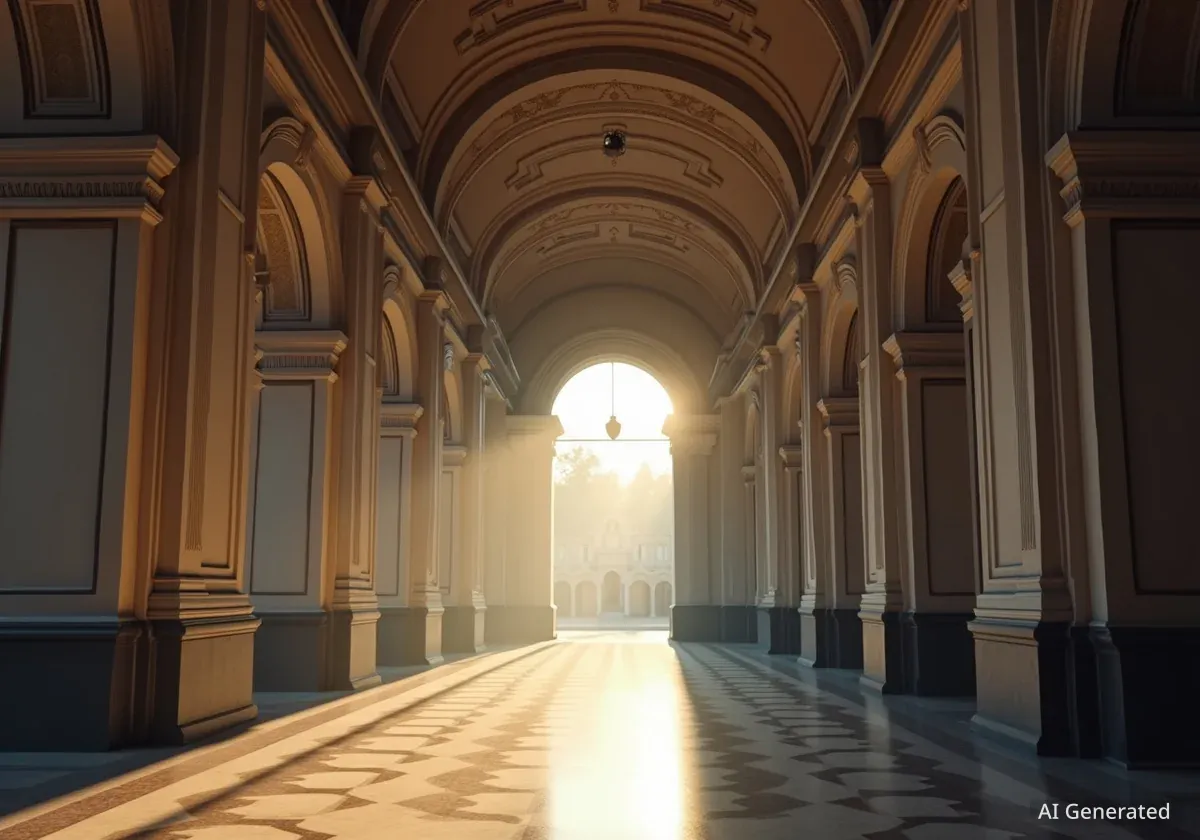Two separate protests took place at major art institutions in Madrid on Spain's National Day, October 12th. At the Naval Museum, activists from Futuro Vegetal targeted a painting of Christopher Columbus, while at the Reina Sofía Museum, another group staged a demonstration in front of Picasso's 'Guernica' to protest the conflict in Gaza.
Spanish authorities have charged two individuals in connection with the incident at the Naval Museum, which involved throwing biodegradable paint on the artwork. Museum officials reported that the painting was quickly restored and returned to public display within hours.
Key Takeaways
- Two activists from the group Futuro Vegetal were arrested after throwing red paint on a painting of Christopher Columbus at Madrid's Naval Museum.
- The targeted artwork, 'First tribute to Christopher Columbus' by José Garnelo, was successfully restored the same day.
- Separately, activists from Marea Palestina held a sit-in protest in front of Picasso's 'Guernica' at the Reina Sofía Museum.
- Both demonstrations occurred on October 12th, Spain's National Day, a date that commemorates Columbus's arrival in the Americas.
Protest at the Naval Museum
On Sunday, as Spain observed its National Holiday, two female activists entered the Naval Museum in Madrid and targeted a significant historical painting. The incident focused on José Garnelo's 'Primer homenaje a Cristóbal Colón' (First tribute to Christopher Columbus), a work that depicts a key moment in Spanish maritime history.
The activists, identified as members of the environmental and social justice collective Futuro Vegetal, allegedly threw a biodegradable red liquid onto the canvas. The act was a direct protest against the celebration of the holiday, which the group associates with colonialism.
Immediate Response and Arrests
According to police sources, a museum employee detained the two women at the scene until law enforcement officers arrived. The museum was temporarily cleared of visitors to manage the situation.
The two individuals were subsequently arrested and face charges for a crime against heritage. The protest has reignited discussions across Spain regarding the security of cultural artifacts and the methods used by activist groups to gain public attention.
Rapid Restoration Success
The Naval Museum's restoration team acted swiftly to address the damage. Within a few hours, the Navy, which oversees the museum, announced on its social media channels that the painting had been fully restored. The artwork was placed back on public display later the same day, a testament to the efficiency of the museum's conservation staff.
Futuro Vegetal's Stated Motivation
The group Futuro Vegetal quickly claimed responsibility for the demonstration. In a public statement, the collective explained the purpose behind their actions. They sought to challenge the traditional narrative and celebration of October 12th.
"12 October, nothing to celebrate. Ecosocial justice."
This slogan was displayed on a banner carried by the activists. Their statement elaborated on the protest's goal: to denounce what they describe as the negative historical and ongoing consequences of colonialism, which they link to current social and ecological crises.
Who is Futuro Vegetal?
Futuro Vegetal is an activist collective known for acts of civil disobedience aimed at raising awareness about climate change and social justice. The group often targets high-profile institutions, corporations, and cultural symbols to generate media coverage and provoke public debate on government inaction regarding environmental policies.
Separate Demonstration at Reina Sofía Museum
On the same day, another high-profile art institution in Madrid became the site of a protest. Approximately 20 activists from a group called Marea Palestina staged a peaceful sit-in at the Reina Sofía Museum, one of Spain's most important modern art galleries.
'Guernica' Room Temporarily Cleared
The demonstrators positioned themselves in front of Pablo Picasso's monumental anti-war painting, 'Guernica'. They held signs with messages such as "Stop genocide," drawing a parallel between the historical tragedy depicted in the artwork and the current conflict in Gaza.
The protest prompted museum staff to clear the room for several minutes as a precautionary measure. According to reports, the demonstration lasted for about 40 minutes. The participants chanted slogans, including "Long live free Palestine," as they voluntarily exited the museum.
A Call for International Action
Marea Palestina explained that their action was intended to be a direct appeal for an end to the military offensive in Gaza. The group's demands included a comprehensive arms embargo and the immediate establishment of humanitarian corridors to provide aid to civilians.
The choice of 'Guernica' as a backdrop was symbolic. Picasso's 1937 masterpiece is globally recognized as one of the most powerful artistic statements against the horrors of war and the suffering of innocent populations, making it a poignant location for the group's message.
A Day of Protest in Spain's Capital
The events of October 12th highlight a growing trend of activists using cultural spaces to voice political and social grievances. While the two protests in Madrid were organized by different groups with distinct objectives, they both leveraged the significance of Spain's National Day to amplify their messages.
The incident at the Naval Museum raises questions about protecting heritage, while the demonstration at the Reina Sofía underscores how iconic artworks continue to serve as powerful symbols in contemporary political discourse. Both events ensured that while many celebrated the national holiday, dissenting voices were also present in the public square.




